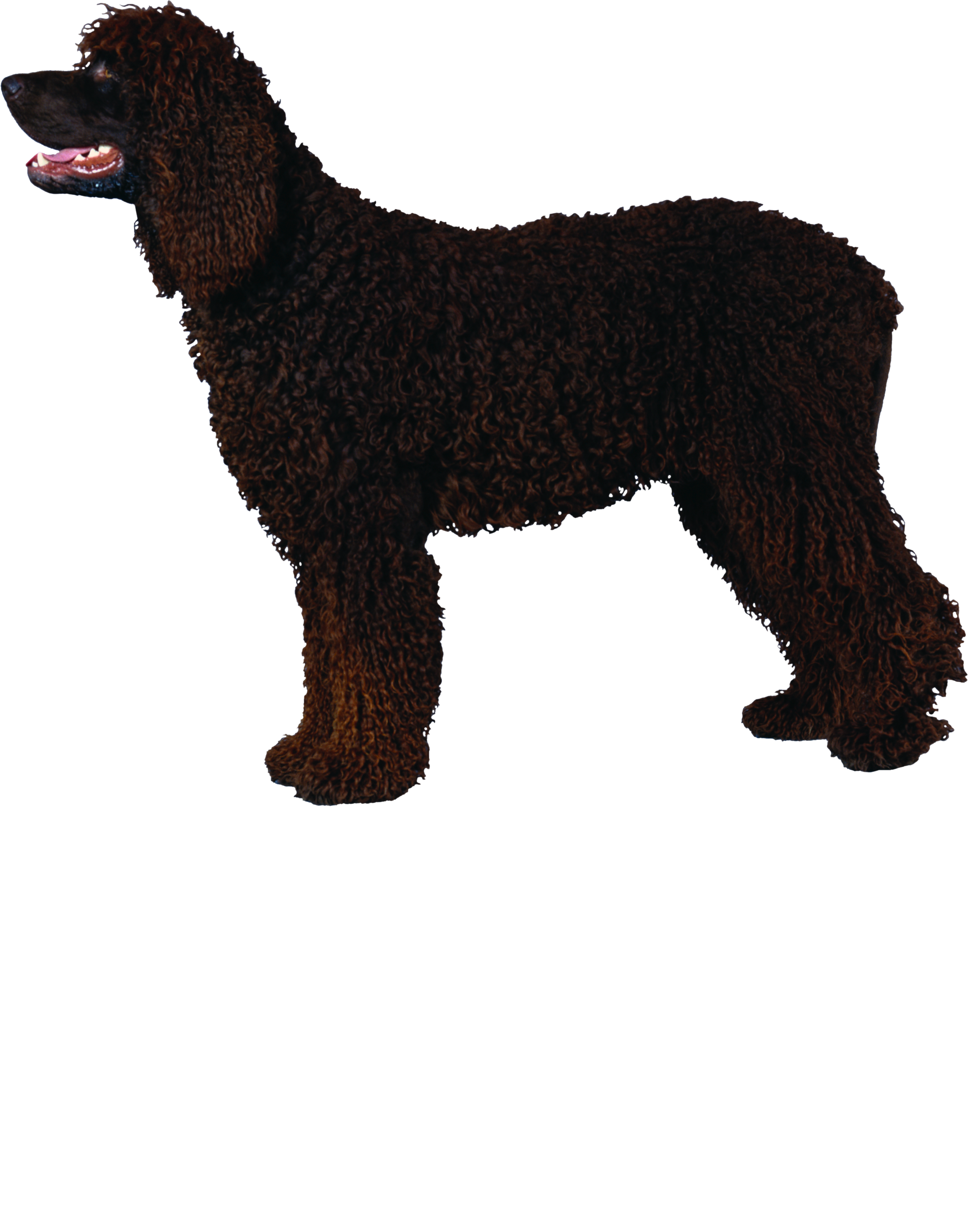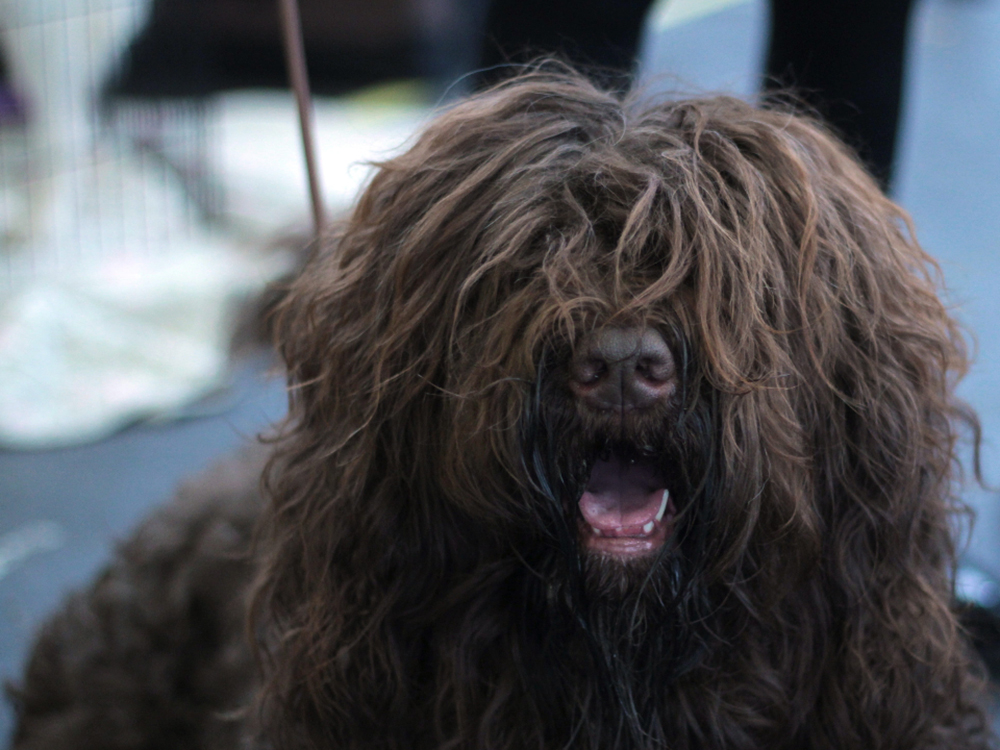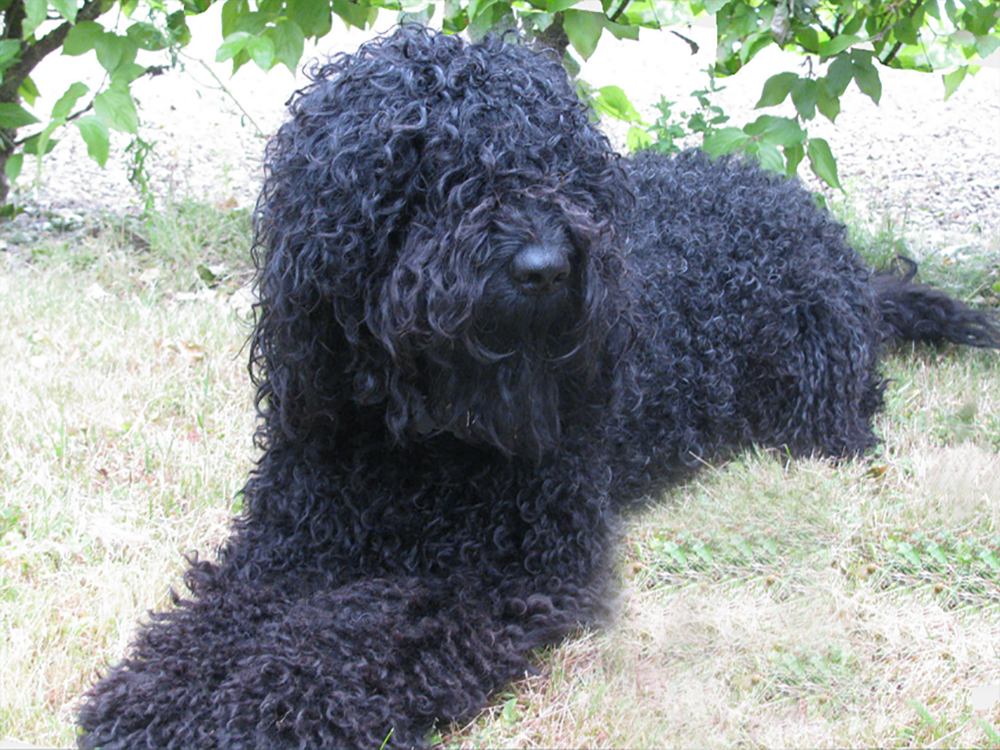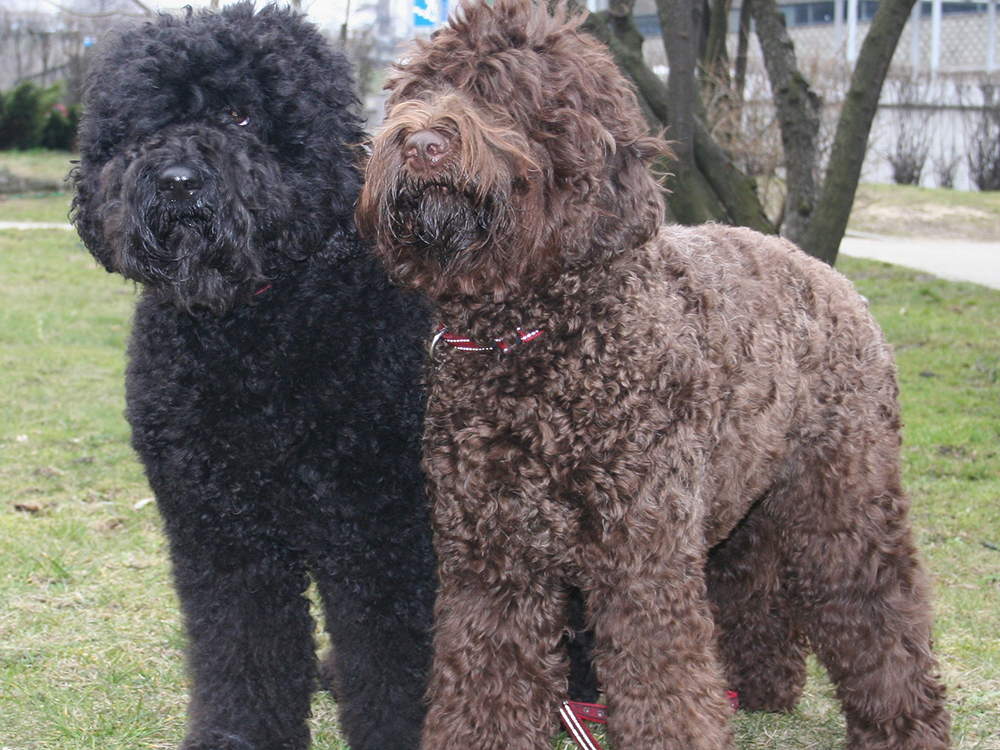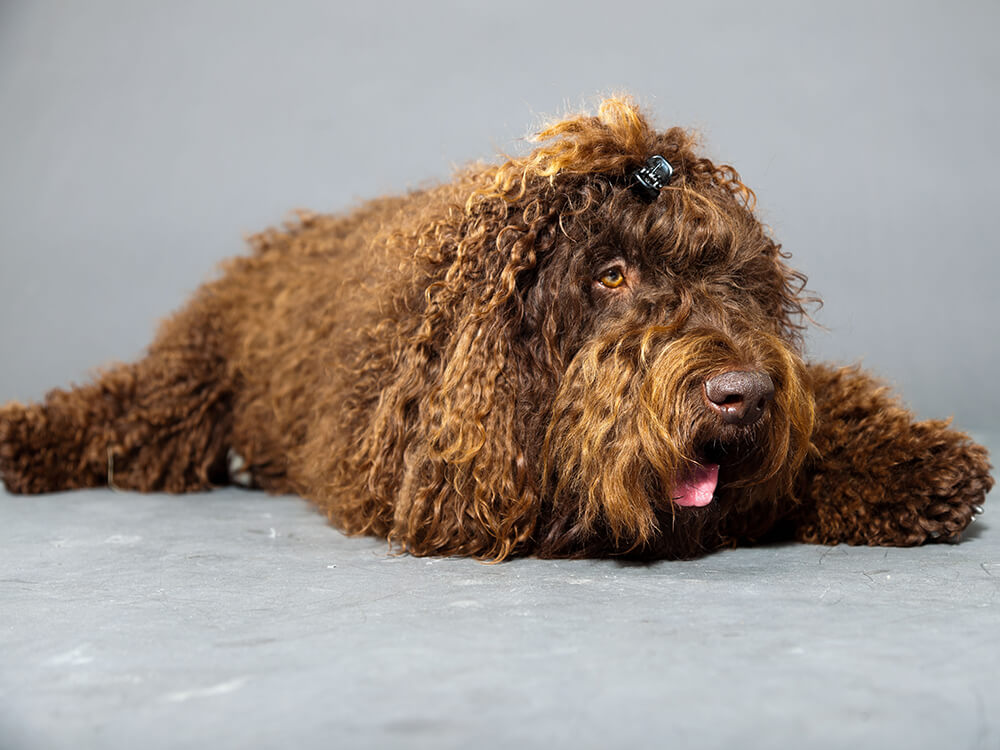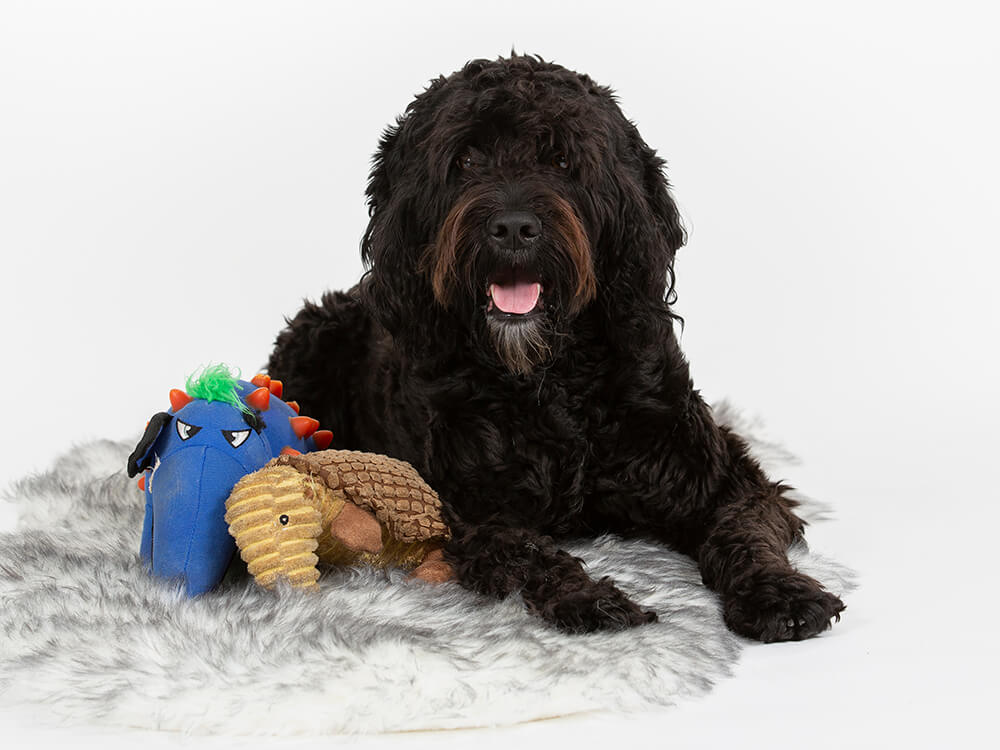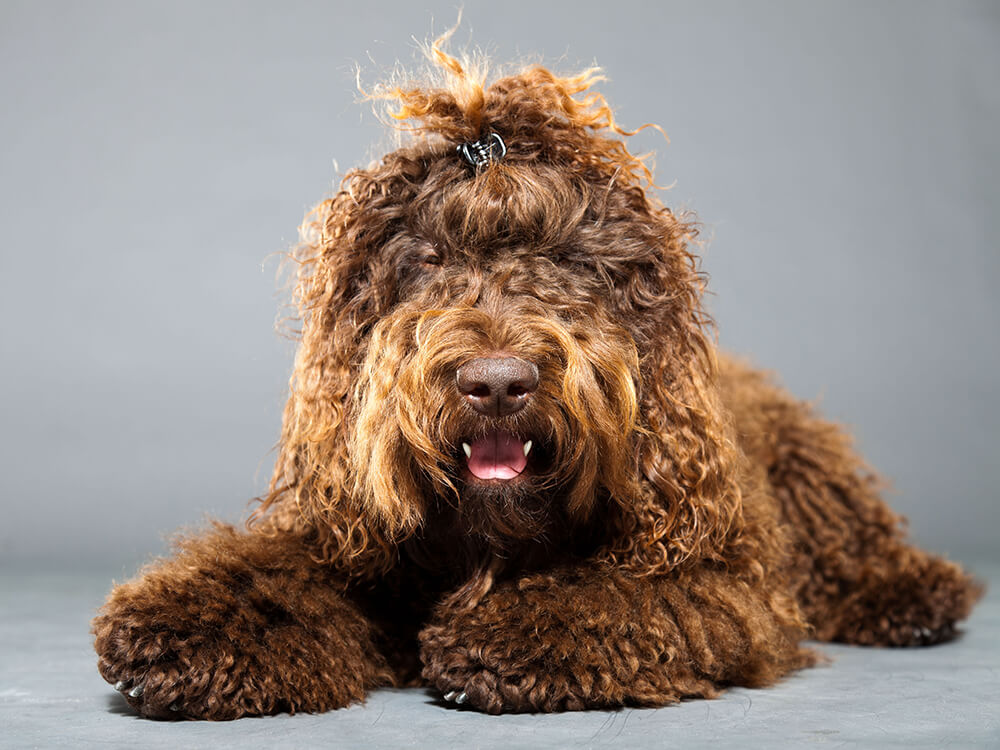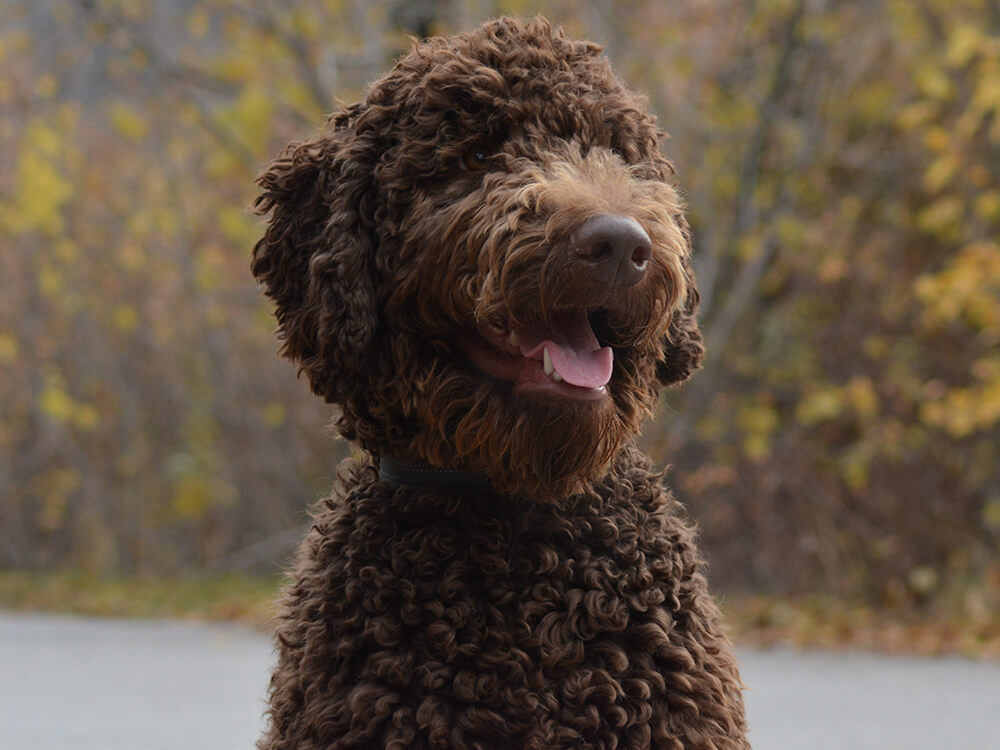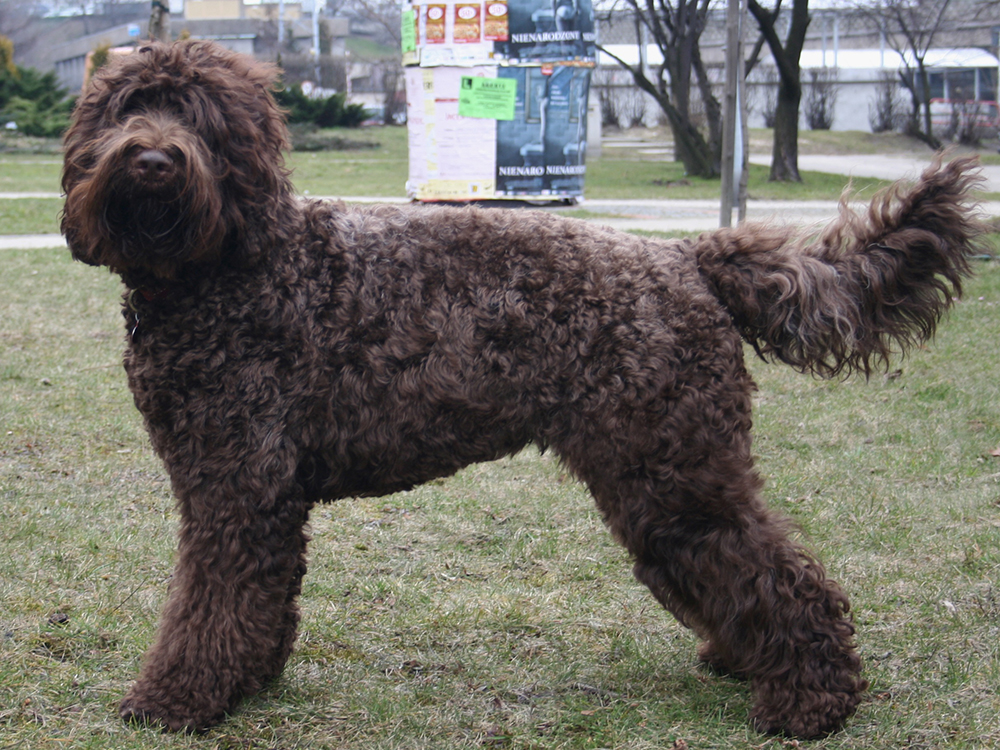
Barbet Breed Pictures
Vital Breed Stats
| Height: | 58 - 66 cm M | 53 - 60 cm F |
| Weight: | 15 - 28 kg M | 15 - 28 kg F |
| Breed Group: | Gundog Dog Group |
| Life Expectancy: | 13 - 15 years |
| KC Registered: | No |
Breed Characteristics
| Size: |  |
| Grooming: |  |
| Exercise Level: |  |
| Trainability: |  |
| Barking Level: |  |
| Good with Children: |  |
| Good with other pets: |  |
| Affectionate: |  |
| Protective: |  |
| Cost to Keep: |  |
Give a thumbs up if you love the Barbet

0
More About the Breed
History
The breed’s name originates from the French word ‘barbe,’ which means beard. It is a fitting name for a dog with an impressive and distinguishing thick, curly beard that matches his coat. The Barbet is also dubbed as ‘mud dog’ since he tirelessly chases birds into mud and water.
The Barbet's true origins are unclear. It is thought to have descended from the African shepherd dogs that procreated with European dogs during the seventh century. Meanwhile, there were also records of the barbet’s existence that date back to 1387 when the first written description of the breed appeared. In other accounts, it is believed that the dog existed as early as the eighth century.
The Barbet is known to be the predecessor of different modern water dog breeds such as the American water spaniel, poodle, griffon, Portuguese water dog, bichon frise, and otterhound. This earned him the title the ‘father of all poodles.’
The Barbet is not only a skilled water dog that can withstand the coldest waters, but also a sociable companion that is fond of his owners. It is no wonder that the nobility and peasants alike welcome him into their homes. It is said that King Henry IV adored barbets and kept them as companions. One time, his mistress was reprimanded for bringing the pooch with her to church. Meanwhile, commoners nicknamed him ‘sailor's companion’ as he not only retrieves waterfowl, but also the fish that escaped the fisherman's net.
After World Wars I and II, the breed was on the brink of extinction. With the efforts of a few fanciers, they managed to increase the barbets, although it remains one of the rare dog breeds. Approximately, there are less than a thousand barbets around the globe. Fanciers are hoping that more people will appreciate the barbet and open their homes for this lovable and enthusiastic dog.
Appearance
The most distinctive characteristic of the Barbet is his thick, fuzzy coat that covers his entire body. He also has a shaggy moustache and a beard. The dense layers of fur are waterproof and protect him from the cold. Its texture may range from wavy to curly and colours may vary from solid white, black, grey, fawn, red fawn, pale fawn, and brown. Despite the barbet's thick coat, it only sheds a little, which makes the dog a good choice for dog lovers with allergies.
The Barbet has a wide, bulbous skull, round, dark eyes, wide nose, and thick, black lips. His ears are tuft and flat. He has a robust and athletic build with a broad chest, sturdy brawny legs, and a tail that is slightly curved at the tip. The barbet possesses huge webbed feet that function like flippers and help him swim efficiently.
Grooming
When grooming the Barbet, take extra care of his coat. Bathe him once every two or three months. Avoid excessively washing him as it can lead to dry skin and hair. Whilst the coat does not shed frequently, loose hairs usually end up matting than falling off. Various dirt and debris may stick on it after a walk too. To keep it clean and free from mats, brush it daily and trim it four times a year to prevent it from overgrowing.
Oftentimes, wet food can get stuck on the beard. Make sure that he is accustomed to getting his face cleaned at a young age. Trimming the hairs around his rear once a month is also recommended to prevent faeces from getting stuck on it.
The Barbet has hairy and droopy ears that need frequent inspection and cleaning to ward off the chances of infection. His nails, too, must be trimmed regularly to avoid cracking, overgrowth, and splitting. Tooth brushing should be practised every day. It is best to start doing this during his puppyhood so he can get used to it easily.
Temperament
A jolly and chummy dog, the Barbet enjoys bonding with his owners just as much as he loves running around and rolling in the mud. His friendliness makes him a perfect fit for households with children and the elderly. Family is something the Barbet treasures deeply, so he develops strong bonds with his owners. Being an active and social animal, he does not want to miss out on any fun family activities.
Leaving him alone for a long time is a no-no, since it can lead him to develop separation anxiety, excessive barking, and chewing. Thus, make time to play and bond with him every day. If possible, have someone who can keep him company whilst you are away on a trip or at work.
Intelligence
Because the Barbet is an easy-going pooch, he interacts well with other dogs, cats, and small animals. However, he needs supervision when around pet birds as he has a high prey drive for fowls. The Barbet is generally friendly towards strangers too. Although the breed is highly sociable, early socialisation is still a must to ensure that the dog is amicable towards other people and pets.
Smart, rarely dominant, and very responsive, the breed is highly trainable and devoted to pleasing his master. Always use positive reinforcement and make training a consistent and fun one to keep him interested in learning new commands. The barbet is known to excel in obedience and agility training. He also has a zest for other exciting dog activities such as rally, dock diving, and lure coursing.
Feeding
Health
- Hernia
- Epilepsy
- Hip Dysplasia
- Ear infections
- Progressive Renal Atrophy
- Allergies
Exercise
Cost of Ownership
Make sure to take into consideration your financial capabilities before buying a new dog. It is a big responsibility that you must be prepared, so that you can properly take care of your furry friend. Owning a Barbet puppy may cost between £400 and £900. More expenses will be forked over when you bring your barbet home. Purchasing dog food and treats may amount to £220 annually. More or less than £400 may be the total cost of your dog’s medical care yearly. Pet insurance fees will make you spend at least £33 a month. Other additional expenses such as toys, grooming, and licence will cost you about £530.
Is a Barbet Right for You?
